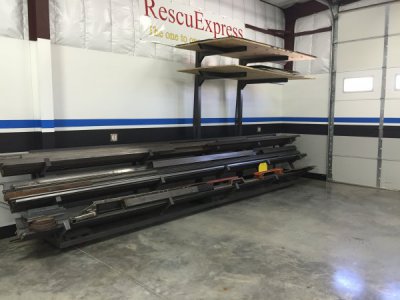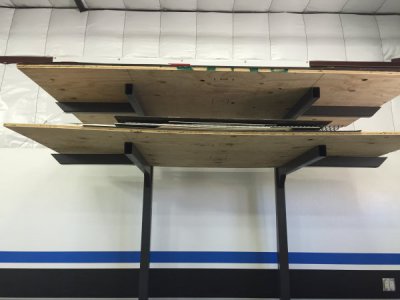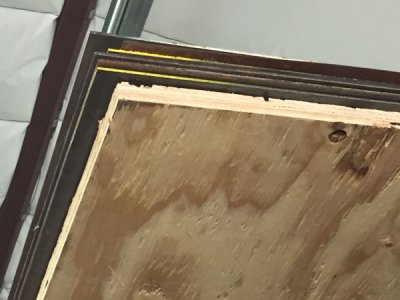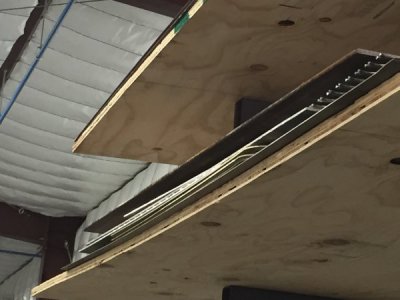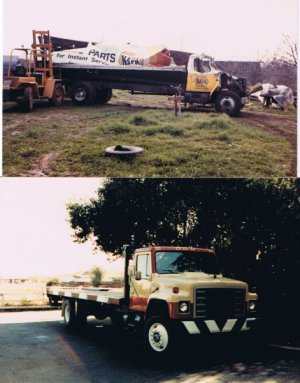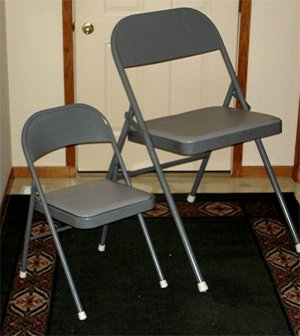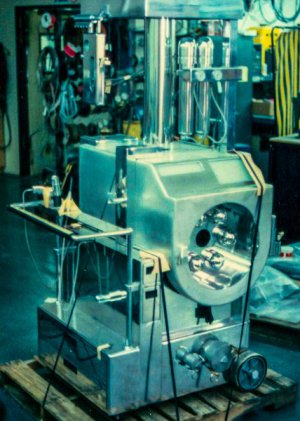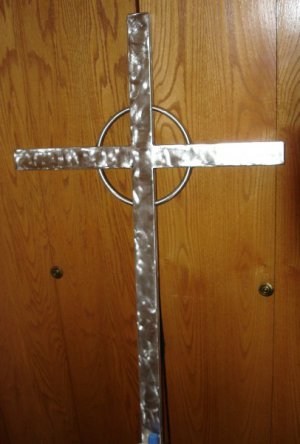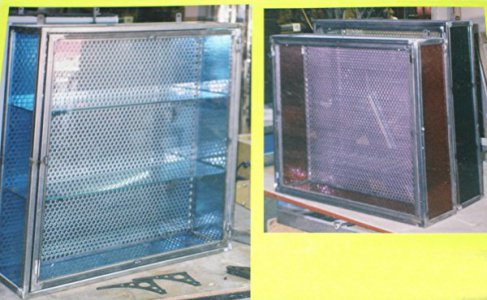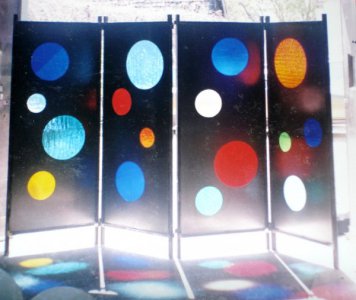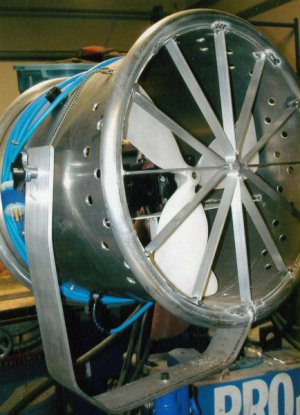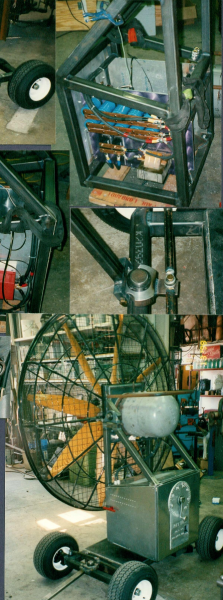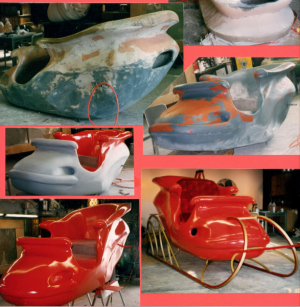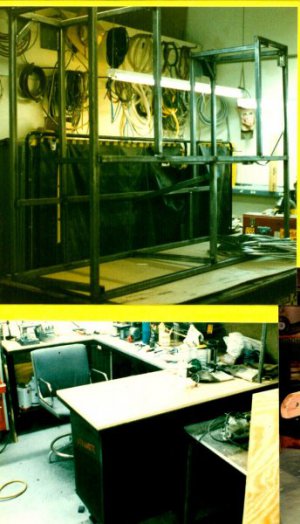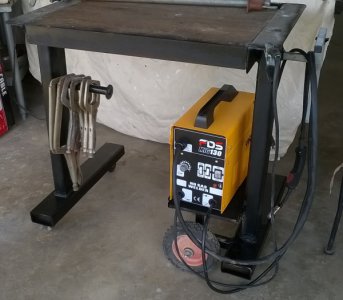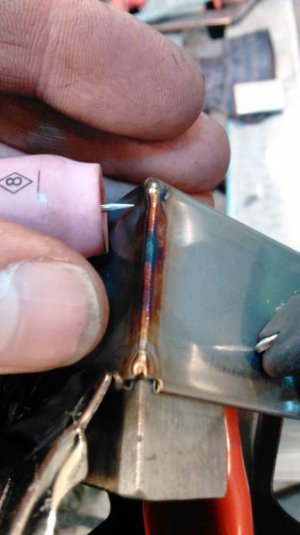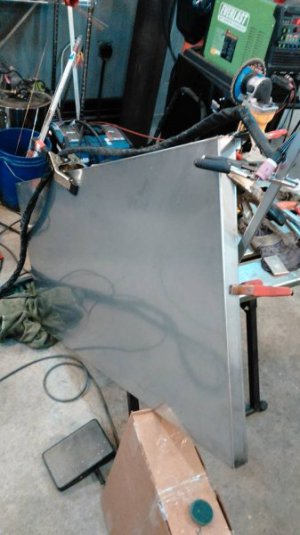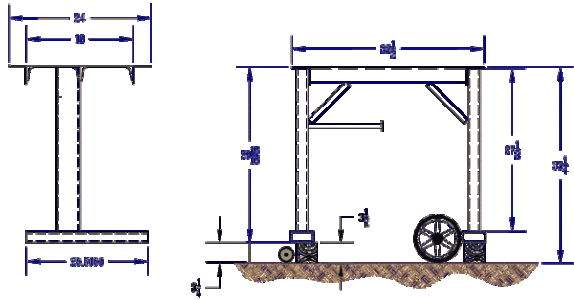Made a rolling mill base for a friend, the design worked out well so far, but the real test will be when we move the machine to his shop.
Main frame; 3/8" x 4"x4" angle iron.
Castor mount plates; 3/8"x4" CR flat bar
Castor supports; 1/4"x3"x3" structural tubing
Leveling feet brackets; 1/4"x3"x3" cut at 45º
The design is a cantilever castor affording a wide base for rolling the mill from trailer to shop. We plan on using a Drop deck trailer for the move and his driveway is quite steep so I wanted to have a decent foot print to keep the machine stable while rolling.
The iron worker notched the corner joints in two bites, I wanted a strong joint so a miter joint was not used as this would have only given an 8" weld. The notched joint style provides 12" of weld per joint.
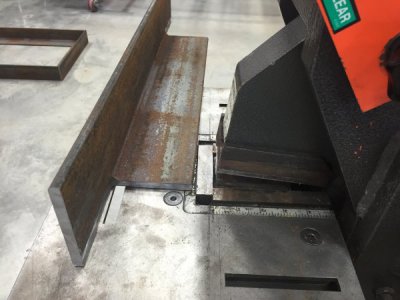
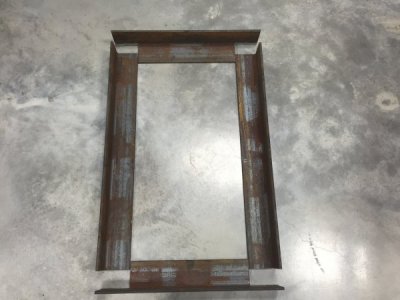
The CR castor plates where broken to 22.5º to end up parallel with the ground once they where welded to the 45º cut on the structural tubbing.
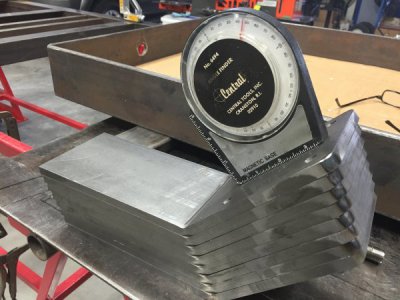
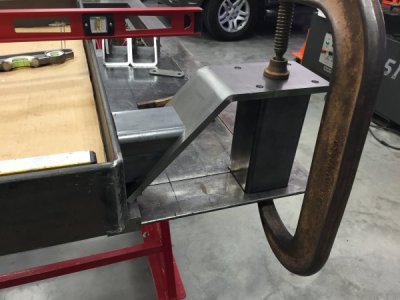
The leveling feet where drilled to 11/16" and a piece of 3/4" round bar was turned to index into the hole of the bracket. The round bar was also drilled/tapped for the leveling feet (1/2"-13)
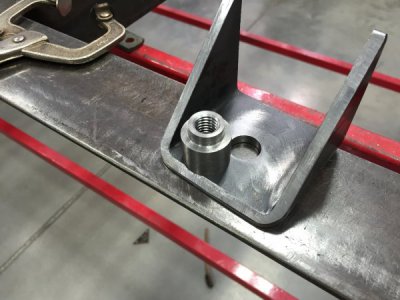
Prior to welding the frame, we set the mill onto a large piece of cardboard to trace the base and locate the mounting holes. A long custom made transfer punch was turned for this and the time spent was wort it to locate the holes. The template also helped with ensuring correct spacing to avoid the large radius found on the inside corners of the thicker angle iron.
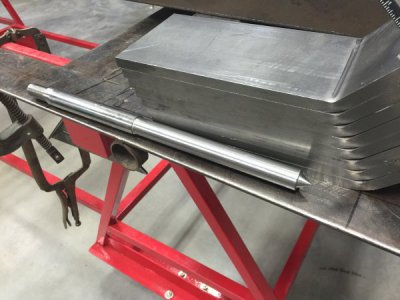
Before welding the frame the template was use to transfer the mounting holes allowing us to drill/tap two sections of angle iron. The welding table was marked allowing us to verify squareness and correct spacing. The hole towards the back of the frame is for the coolant drain plug (also drilled prior to welding frame).
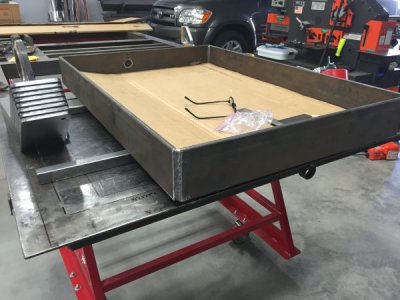
The frame will be 1" off the ground once castors are mounted. Hopefully enough space to allow us to transition from the trailer to the floor.
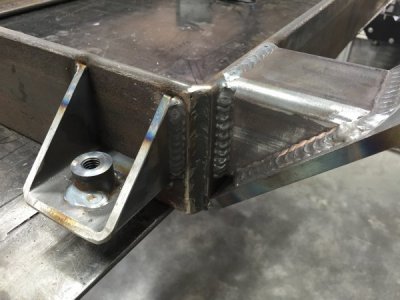
All vertical joint where welded up hill for decent penetration. The Miller 350P was set to 475IPM and skip welding was used to control distortion.
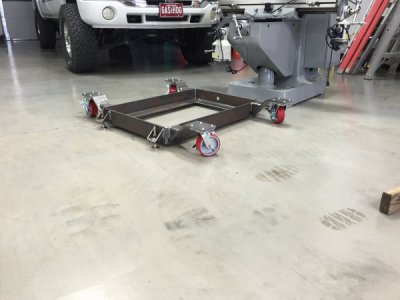
The test fit....I was nervous as I was alone for the pick, but with a come-along and fork lift,I was able to pick the mill up and keep her level.
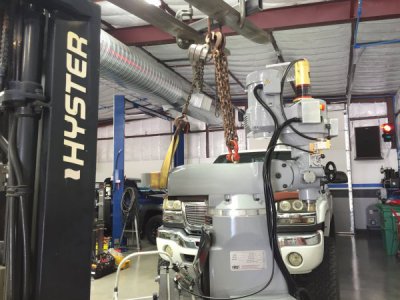
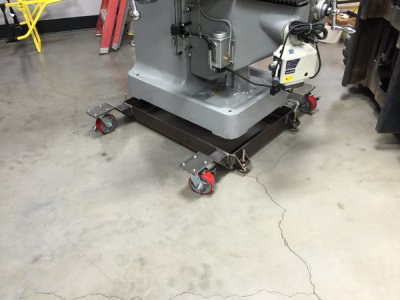
Fit like a glove : )
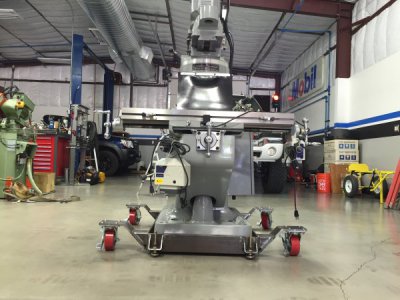
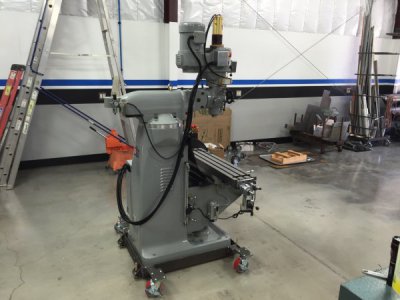
The leveling feet took the load off the castors with little effort using a 8" crescent wrench.
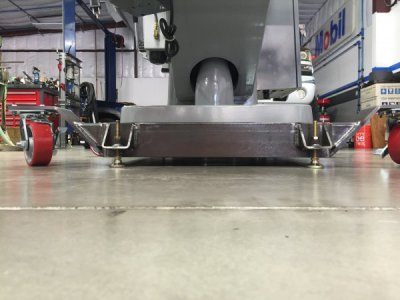
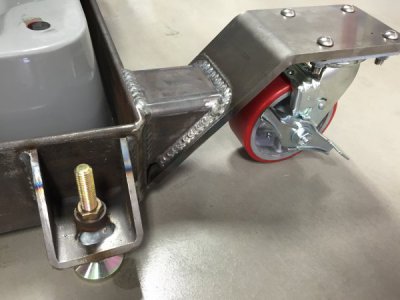
The last photo illustrates the castor clearance while swiveling 360º with about 3/16" clearance at its closest point.
A fun project and for a cool fellow member. Mark spent time assisting me with the build and was helpful. I'm sure he can't wait to get her home and start milling.
Tomorrow will be prime and paint.
Thanks for looking!
Turn and burn...
Paco


